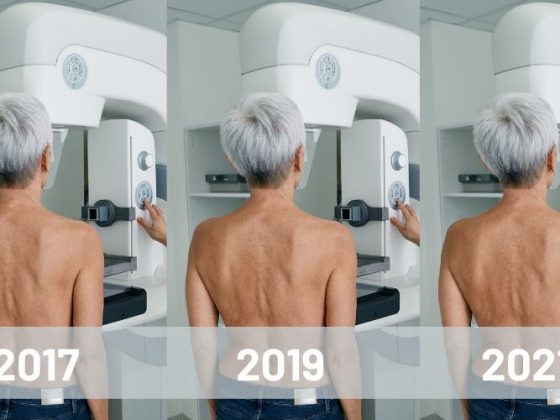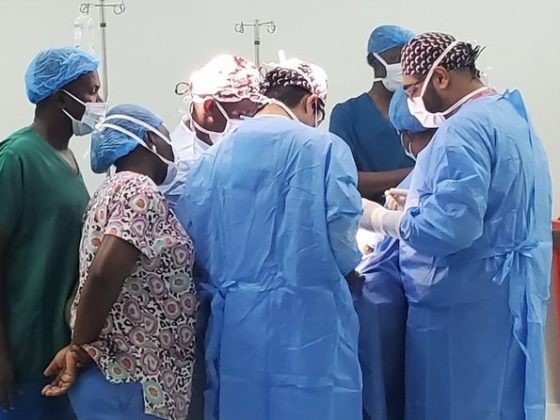Ensuring gender-neutral HPV vaccination, more flexible GP access hours, and national cancer plans tackling gender specific needs are among the policies that have been identified to improve male cancer outcomes. The roadmap ‘Time to Accelerate: Action on Men and Cancer’, launched at the European Parliament, 29 November, calls for European policy makers to give higher priority to the issue of men’s cancers to tackle gender-related cancer inequalities. The document was produced by the European Cancer Organisation (ECO) with the support of the European Association of Urology (EAU), and Global Action on Men’s Health.
“Our initiative aims to put the issue of men and cancer on the policy agenda for the European Parliament elections in 2024 and to encourage policymakers to take proper account of men, especially when it comes to cancer prevention and early diagnosis,” says Peter Baker, co-chair of ECO’s Men and Cancer Workstream, and director of Global Action on Men’s Health. “Men in Europe carry an excess burden of cancer – they’re more likely than women to develop cancer and to die from it. But it doesn’t have to be this way.”
Across the WHO Europe region, men are 16% more likely than women to be diagnosed with cancer and 43% more likely to die of the disease. “The statistics have been available for decades, but have not been properly acknowledged or acted on,” Baker tells Cancerworld. “This is partly because of fatalism (a belief that there is something inevitable and immutable about male premature mortality), a lack of awareness about what could make a difference, and a lack of advocacy about the case for action,” he says.
Biology may have a role to play. “One plausible theory is that men have just one X chromosome and therefore fewer tumour suppressive genes,” explains Baker. Then there are factors relating to cancer prevention. “In general, men are liable to riskier health behaviours, have lower levels of health literacy, and in respect to achieving early diagnosis and appropriate care, may experience particular barriers with primary care access,” write the authors of the report.
Men are more likely to consume more alcohol, smoke more heavily, and have a poorer diet. They may also have higher exposure to carcinogens in their working life – the European Cancer Inequalities Registry (ECIR) shows estimated cancer deaths attributable to occupational carcinogens to be consistently higher among men than women. The introduction of HPV vaccination may now be compounding this gender disparity, as many European countries are still not vaccinating boys, despite up to 40% of HPV related cancers occurring in men.
The overall result is a significant disparity in prevention, early detection, and effective treatment options, leading to a higher burden of cancer morbidity and mortality among men. “But this significant inequality is rarely acknowledged or discussed by policy makers or service providers. Consequently, action is rarely taken to address and tackle it,” write the authors.
The report highlights eight key areas for action that, if addressed, could reduce the number of men getting diagnosed with cancer and save lives. They are:
- Cancer prevention. Ensuring gender-neutral HPV vaccination in all countries.
- Lifting male-associated barriers. A multi-pronged approach for improving early detection for men and cancer, including gender-targeted health information and more flexible access hours for GP and health services.
- Men and psychosocial support. Targeted approaches to improve male participation in accessing psychosocial support, including one-to-one peer support and anonymised access points for help (e.g. apps and webchats).
- Equity intersections. Improving understanding and response to the needs of particular groups of men at risk of getting cancer and experiencing poorer outcomes. Examples include ethnic marginalised communities, the LGBTQIA+ community, low-income groups, and men living in rural areas.
- Improving knowledge. Introducing routine and comprehensive data collection and analysis covering sex and gender. Accelerating research into men and cancer (both clinical and social).
- National Cancer Plans. Introducing National Cancer Plans that address gender-specific needs.
- Increasing the response. Providing information and training for policy makers and practitioners on improving cancer policy and services for men.
The launch of ‘Time to Accelerate: Action on Men and Cancer’ at the European Parliament was supported by MEPs Alessandra Moretti (North-East Italy) and Istvan Ujhelyi (Hungary).
In addition to work at the EU level, initiatives at country level are being planned. “It would also make sense to focus first on the most achievable objectives, such as improving men’s uptake of bowel [colorectal] cancer screening and gender-neutral HPV vaccination,” says Baker.
Disparities across Europe in the introduction of gender-neutral HPV vaccination programmes are of particular concern. In many Eastern and South-Eastern European countries, boys are excluded from programmes. The HPV Prevention Policy Atlas, published in June 2023, which scored countries throughout Europe on HPV vaccination, found that only 62% of European countries (30 out of 46) currently offer gender-neutral HPV vaccinations. Countries vaccinating girls, but failing to vaccinate boys, include Andorra, Armenia, Bosnia-Herzegovina, Bulgaria, Estonia, Georgia, Iceland, Moldova, Montenegro, North Macedonia, Russia, and San Marino. Even Europe’s Beating Cancer Plan discriminated against men, setting a target of 90% HPV vaccination coverage for girls by 2030 and recommending only a ‘significant increase’ for boys. “It’s anomalous the plan fails to provide a 90% target for boys too. We should be aiming for the highest possible vaccination rate for everyone. And setting a clear and ambitious target would help to encourage this,” says Baker.
Addressing the need to improve the collection of data, Baker says, “Crucially, we need to draw better conclusions from the data so that it directly informs policy. At the moment, it’s too common to see reports that list some data at the start showing men do badly, but this is never linked to any recommendations for action.”












